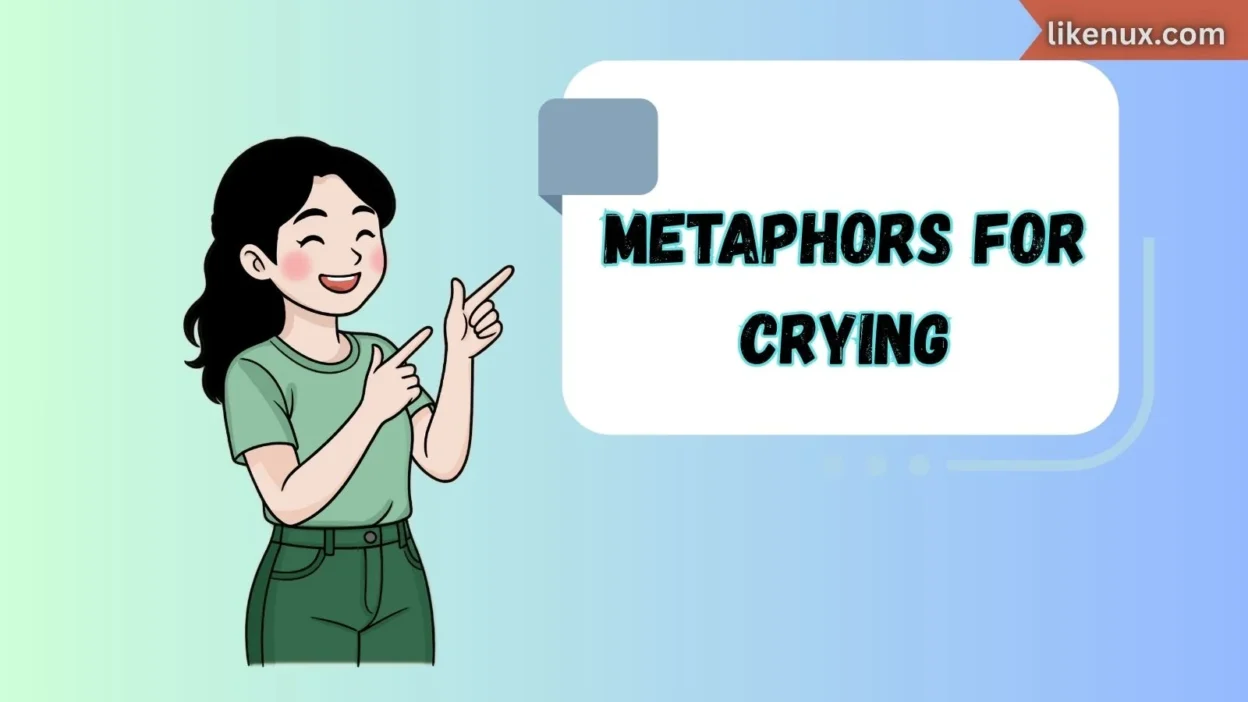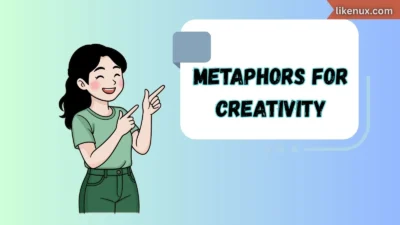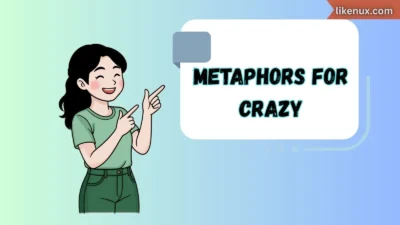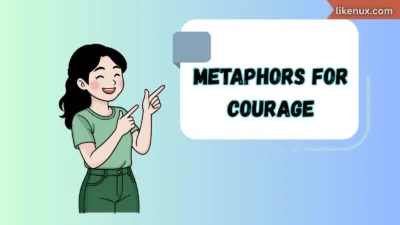Crying is one of the most universal human expressions of emotion—a release that connects pain, joy, empathy, and even relief. Yet, describing tears can be tricky. Sometimes, we cry from heartbreak, and other times from laughter or pure gratitude. This is where metaphors for crying help us express the depth of our emotions in more poetic and heartfelt ways.
In this article, we’ll explore 25 thoughtful metaphors for crying—each crafted with warmth and care—to help you express tears in a way that resonates deeply with readers, listeners, or loved ones. Whether you’re writing a poem, story, or heartfelt message, these metaphors can help transform simple tears into something meaningful and profound.
1. Crying is a river flowing from the heart
Meaning: Tears represent the continuous flow of deep emotion from within.
In a sentence: Her sorrow poured out like a river flowing from the heart.
Best use: Perfect for describing long, uncontrollable crying caused by heartbreak or grief.
Other ways to say: “Tears streamed endlessly,” “Her emotions overflowed.”
2. Crying is a storm breaking the silence
Meaning: Crying brings emotional release after holding feelings in for too long.
In a sentence: His quiet facade shattered as a storm of tears broke the silence.
Best use: Ideal for depicting emotional breakthroughs after repression.
Other ways to say: “Emotions erupted,” “He let it all out.”
3. Crying is rain from a wounded sky
Meaning: Just like rain falls from dark clouds, tears fall from a heart in pain.
In a sentence: Her eyes became the wounded sky, raining sorrow.
Best use: Beautiful for poetic or emotional writing.
Other ways to say: “She wept softly,” “He cried under heavy emotions.”
4. Crying is a language the soul speaks
Meaning: Tears communicate emotions when words fail.
In a sentence: His tears spoke the truths his voice couldn’t.
Best use: Great for emotional storytelling or speeches about empathy.
Other ways to say: “Silent tears,” “Wordless sorrow.”
5. Crying is the ocean’s tide of emotion
Meaning: Tears come and go like waves, expressing deep emotional currents.
In a sentence: Waves of sadness washed over her as she cried.
Best use: Poetic or reflective writing about grief or nostalgia.
Other ways to say: “She sobbed in waves,” “Tears ebbed and flowed.”
6. Crying is the melting of frozen feelings
Meaning: Tears thaw the emotions we’ve tried to hold back.
In a sentence: His tears melted years of numbness.
Best use: Describing emotional healing or recovery.
Other ways to say: “He finally broke down,” “She released her pain.”
7. Crying is the heart’s rainstorm
Meaning: A powerful outpouring of emotional intensity.
In a sentence: His heart released a rainstorm of tears.
Best use: For describing deep grief or loss.
Other ways to say: “Emotional flood,” “She burst into tears.”
8. Crying is the breaking of emotional glass
Meaning: When someone can’t hold it together anymore, tears shatter their composure.
In a sentence: Her strength cracked like glass, and tears fell freely.
Best use: To show vulnerability or emotional collapse.
Other ways to say: “Her facade broke,” “He crumbled emotionally.”
9. Crying is the release of the soul’s pressure valve
Meaning: Crying relieves emotional buildup, like releasing steam.
In a sentence: She cried, letting out the pressure that had built for years.
Best use: Self-care, emotional wellness, or personal growth writing.
Other ways to say: “She finally let go,” “He exhaled through tears.”
10. Crying is painting with watercolors of emotion
Meaning: Tears add emotional depth to our human experience.
In a sentence: Her tears colored the moment with shades of sadness and love.
Best use: Creative, poetic, or artistic expressions.
Other ways to say: “Tears of beauty,” “Emotional expression.”
11. Crying is thunder in the silence of sorrow
Meaning: The sudden sound or release of grief in stillness.
In a sentence: His sobs echoed like thunder through the quiet night.
Best use: Deeply emotional or cinematic writing.
Other ways to say: “He sobbed loudly,” “Her grief roared.”
12. Crying is a waterfall of memory
Meaning: Tears often come from remembering what once was.
In a sentence: Each tear carried a memory she couldn’t let go.
Best use: Nostalgic or reflective stories.
Other ways to say: “Tears of remembrance,” “Emotional flood.”
13. Crying is the earth’s way of watering the soul
Meaning: Just as rain nourishes the earth, tears heal the spirit.
In a sentence: Her tears were not weakness—they were watering her soul.
Best use: Motivational or healing writing.
Other ways to say: “Healing tears,” “Cleansing release.”
14. Crying is the echo of broken laughter
Meaning: Tears can follow moments of lost joy or faded happiness.
In a sentence: The laughter faded, leaving behind the echo of tears.
Best use: Bittersweet or melancholic expressions.
Other ways to say: “Tears replaced laughter,” “She wept softly.”
15. Crying is a candle melting in the dark
Meaning: Tears symbolize vulnerability and endurance through pain.
In a sentence: She wept like a candle melting quietly in darkness.
Best use: For describing gentle, enduring sorrow.
Other ways to say: “Soft tears,” “Silent weeping.”
16. Crying is the body’s way of praying
Meaning: Sometimes tears are a silent plea for strength or peace.
In a sentence: Her tears became her prayer when words were gone.
Best use: Spiritual or deeply emotional writing.
Other ways to say: “She cried to the heavens,” “He wept for mercy.”
17. Crying is an emotional sunrise after a long night
Meaning: Tears can bring emotional clarity and renewal.
In a sentence: After crying, she felt like the sun finally rose within her.
Best use: Healing or motivational messages.
Other ways to say: “Tears of renewal,” “Emotional awakening.”
18. Crying is music only the heart can hear
Meaning: Tears express emotions that resonate on a personal level.
In a sentence: Her tears sang the song of a heart once full of love.
Best use: Poetic, romantic, or reflective writing.
Other ways to say: “Her soul wept,” “Emotional harmony.”
19. Crying is the ink of the soul writing its story
Meaning: Tears tell stories that words cannot capture.
In a sentence: His tears wrote the story of everything he couldn’t say aloud.
Best use: Artistic or introspective works.
Other ways to say: “Emotional storytelling,” “Heartfelt release.”
20. Crying is fire turned to water
Meaning: Passion and anger transforming into vulnerability.
In a sentence: Her anger softened, turning into tears.
Best use: Depicting emotional transitions.
Other ways to say: “Tears of surrender,” “Softened emotions.”
21. Crying is a mirror washing its reflection
Meaning: Tears cleanse the soul, just as water cleans a mirror.
In a sentence: She cried until her reflection looked new again.
Best use: Healing, forgiveness, or self-growth writing.
Other ways to say: “Cleansing tears,” “Releasing pain.”
22. Crying is rain on the garden of empathy
Meaning: Tears nurture understanding and compassion.
In a sentence: His tears made him more human, more kind.
Best use: Emotional intelligence or empathy discussions.
Other ways to say: “Tears of connection,” “Emotional growth.”
23. Crying is the sky writing poetry in rain
Meaning: Tears can be beautiful expressions of the heart.
In a sentence: Her tears fell like poetry written in the rain.
Best use: Romantic or creative expression.
Other ways to say: “Tears of beauty,” “Poetic sorrow.”
24. Crying is the lullaby of pain
Meaning: Tears soothe the ache within.
In a sentence: Her sobs became a lullaby, rocking her pain to rest.
Best use: Describing emotional comfort or healing.
Other ways to say: “Soft sobs,” “Gentle weeping.”
25. Crying is the soul’s rain after drought
Meaning: Tears bring life back to emotional dryness or numbness.
In a sentence: After years of holding back, her tears finally fell, refreshing her spirit.
Best use: Renewal, forgiveness, or recovery themes.
Other ways to say: “Emotional rain,” “Healing release.”
FAQs About Crying
1. Why do we cry when we’re emotional?
Because crying is our body’s natural way of processing intense feelings—it’s both psychological and biological healing.
2. Can crying actually make you feel better?
Yes. Studies show that crying releases oxytocin and endorphins, which help reduce stress and promote calm.
3. Why do some people cry more than others?
It depends on emotional sensitivity, personality, and past experiences. Some people feel emotions more deeply and express them more openly.
4. Is crying a sign of weakness?
Not at all. Crying is a sign of emotional strength and authenticity—it shows you’re in touch with your true self.
5. How can I express crying in writing without saying “she cried”?
You can use metaphors like “Her eyes became rivers” or “He wept like rain against glass” to make your descriptions vivid and emotional.
Conclusion
Crying is not just about tears—it’s about feeling, healing, and being human. Whether it’s the soft drizzle of quiet sorrow or the roaring storm of grief, tears tell stories words cannot. These 25 metaphors for crying help us find beauty in vulnerability and truth in emotion.
When you write about crying—write from the heart. Because sometimes, it’s in our tears that we find the deepest expressions of love, empathy, and strength.

Andrew Christopher is a passionate visionary who blends creativity with purpose to bring ideas to life. With a focus on innovation and integrity, he inspires growth and lasting impact.



